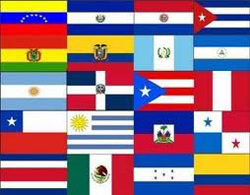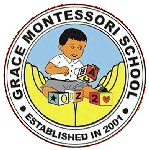

Learning number concepts and basic operations had its origin in sensorial education. This is supported by unique materials such as sandpaper numbers, cards and counters, golden bead materials among others which are sequentially arranged. These materials developed by Maria Montessori lead the child through progressive sequenced activities focusing on concepts and prepare the child for abstraction.


Language is not taught but absorbed and perfected thru human contact. Children who had various experiences are given labels for those experiences and as a result will develop and expand their means of expression. Their rich vocabulary depends on these experiences. Reading and writing are integral part of this curriculum aiding them to creatively express and understand the thoughts of others and of themselves.
Art
Art, like music is a means of expression and should always be a part of the environment. Not only they can freely choose materials and media to create products with their abilities, adults also participates by encouraging the child without judgment. Special art projects are also done on Thursdays.

Yoga
Montessori realized the importance of movement in a learning environment. Montessori children are familiar with working on a rug, free and productive movement but they require more movement and stretching . Yoga is a fun way to help a child calm and center his body and his mind. It also increases attention span, ability to focus and concentrate as they he become more aware of his body.

Before and After School Care
Grace Montessori offers extended programming to students ages 3-6 both before and after school. (7:00 am-6:00pm)


Spanish
As part of our multi-cultural curriculum, Spanish is integrated in our classrooms. Grace Montessori offers Spanish as a second language to develop each child’s appreciation of other’s ethnic and cultural differences. (Tuesdays)

Enrichment Classes
Curriculum

Pre-School and Kindergarten
Grace Montessori offers a warm friendly environment to children ages 3-6. They are exposed to preparatory activities in practical life enabling them to develop their order, concentration, cooperation, and independence through the use of their hands.
The Sensorial area provides an excellent opportunity to the child to be more aware of his environment. Using materials from this area helps his senses to be actively engaged while in his “sensitive period”. These sensorial experiences indirectly prepares him for future exploration of language, math, geometry, art, and music.
Cultural education connect children to humanity. As diverse as we are both in student and faculty composition, we celebrate other’s tradition, music, food, language, craft, art, and clothing by exposing them to materials where they see, accepts, and appreciate the uniqueness of other cultures. Materials in all areas of the classroom are all designed to aesthetically pleasing, self- correcting, positively repetitive, reinforcing, and sensorial that leads from concrete to the abstract.
Sign Language
This multi-sensory program introduces children to a “hands on” second language. Their experience as they communicate with their bodies enhances their speaking, spelling, and reading skills. (Wednesdays ) Computer Children benefits from this class where interactive learning is experienced to help them grasp and retain fundamental concepts. (Wednesdays)
